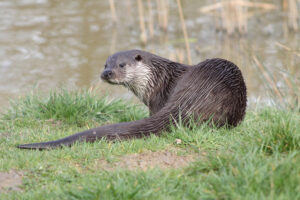So, What Exactly is a Wetland?
Let’s get straight to it – what exactly is a wetland? Well, you might be interested to learn that there’s more to wetlands than the name suggests. Traditionally, a wetland is an area of land found between a body of water and dry land. That’s not to say that wetlands are always wet. In fact, some of them spend more of the year dry than they do underwater! There’s a surprising variety in wetlands. They come in different shapes, sizes, and host all sorts of different wildlife animals and plant life. Wisconsin hosts a fascinating range of different types of wetlands. Marshes, forested wetlands, bogs, rare wetlands, and even sedge meadows are all found here. In spite of their differences, each of these variations share a few common things. Firstly, there’s water at some point in the year. Otherwise, how would they come up with the name? Wetlands can be categorized by their water reserves both above and below ground. Another common feature is the plants which thrive in wetlands. These plants are specifically adapted for life underwater and aren’t found anywhere else. The composition of the soil is unique and supports the fauna that grows there. Finally, wetlands will all bring similar benefits to the local area. They can be great for tourism and recreation. Wetlands also help to remove sediment from rivers. They’re a natural form of water control, and that goes a long way to reducing floods throughout the year.
What Animals Are You Likely to Find There?
With a combination of water, land and nutrient-rich soil comes an abundance of wildlife. There’s a huge range of animals which need Wisconsin’s wetlands to survive. In fact, around 75% of all animal species found in Wisconsin will, at some point in their lives, depend on wetlands. Not only do fish find nutritious food in wetlands, but they also reproduce and use precious spawning grounds there. Salamanders, frogs, and insects can spend their whole lives in wetlands. Snakes, turtles, and other reptiles are also quite common. They hunt, reproduce and live in wetlands. The wetlands also support larger animals too. Think otters, minks and even deer which rely on them for food and drink.Why is it So Important to Look After Wetlands?
We’ve given you some idea of the wildlife which relies on wetlands. So what happens if the wetlands disappear? Where do the animals go then? In the last 200 years alone, Wisconsin has lost roughly half of its natural wetlands. That’s a devastating 5 million acres of valuable animal habitats. It’s important that all of us look after the remaining wetlands in Wisconsin.“Milwaukee is a city built around rivers and wetlands. They provided resources for an important industrial economy. As all wetlands do, they provide ecosystem services for the surrounding areas by controlling flooding and providing valuable habitat for a host of wildlife species.”
— Marcus
The healthier the wetlands are, the more capable they are of supporting the unique wildlife found there. When they can no longer support those animals, they’ll head for the city and your garden. If they decide to relocate to your back yard, there’s a good chance you’ll need wildlife removal services to get rid of them.


